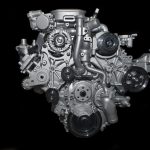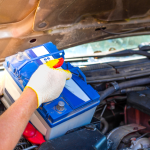When we think of Formula 1, our minds often race to the podium finishers—those elite drivers who, through skill and determination, battle it out on the world’s most challenging circuits. But behind every F1 car roaring down the track at 200 miles per hour is a massive team of individuals who never get the spotlight but are crucial to keeping F1 running. From mechanics to strategists, engineers to logistics coordinators, these unsung heroes work tirelessly behind the scenes to ensure the race goes off without a hitch.
In the high-stakes world of Formula 1, every second counts, and it’s the people we rarely see who make sure those seconds add up to success. Without their dedication, expertise, and passion, keeping F1 running smoothly would be impossible.
The Pit Crew: Masters of Precision and Speed

When a Formula 1 car pulls into the pit lane, it’s easy to marvel at how quickly the tires are changed and the fuel is replenished. The pit crew is one of the most visible teams that keep F1 running, but their importance extends far beyond those few seconds of action.
Every team has a carefully orchestrated pit stop plan, honed through hours of practice and precision training. A single mistake during a pit stop can make or break a race, which is why pit crews are considered some of the most vital members of the F1 world. They train relentlessly to ensure that their actions are as quick and flawless as possible.
But the pit crew’s role in keeping F1 running isn’t just about speed. They are also responsible for identifying issues with the car mid-race and making adjustments in real time. Whether it’s managing tire wear, detecting damage, or making quick adjustments to the car’s aerodynamic settings, the pit crew ensures that every car remains competitive throughout the race.
Engineers: The Brains Behind F1 Running
While the drivers may be the face of a Formula 1 team, it’s the engineers who serve as the backbone. These men and women are responsible for designing, testing, and refining the cars that push the limits of technology and speed. Their innovations in aerodynamics, engine performance, and mechanical reliability are what truly keep F1 running at the pinnacle of motorsport.
Formula 1 cars are a marvel of engineering, requiring constant evolution to stay competitive. Each car is meticulously designed to be lighter, faster, and more efficient than its predecessor. Engineers work year-round to develop new parts, analyze data, and tweak every aspect of the car’s design. From the aerodynamics to the suspension and engine, everything is scrutinized down to the smallest detail.
The role of the engineers doesn’t stop once the race begins. They monitor the car’s performance in real time, adjusting race strategies and providing crucial information to the driver and the team. By analyzing the data, they can optimize the car’s performance on the track, ensuring that every race is run to perfection.
Strategists: The Minds Behind Race Day Success
While speed and precision keep F1 running on the track, strategy plays a critical role in determining success or failure. Formula 1 strategists are tasked with developing race plans that maximize the team’s chances of winning, all while adapting to the ever-changing circumstances of the race.
These strategists analyze everything from tire wear to weather conditions and fuel consumption, making split-second decisions that can impact the outcome of the race. Whether it’s timing the perfect pit stop or deciding when to push for a faster lap, these behind-the-scenes experts are instrumental in a team’s success.
In a world where a single pit stop can determine a race’s outcome, the strategy team is essential in keeping F1 running smoothly. Their foresight, adaptability, and real-time decision-making allow drivers to stay competitive while managing the many variables that can affect race day.
Mechanics: Guardians of F1 Performance
Mechanics are another key group that ensures F1 running never falters. These experts are tasked with maintaining the cars, diagnosing issues, and repairing damage. Their role begins long before race day and continues long after the final checkered flag waves.
In the days leading up to a race, mechanics work tirelessly to ensure that every part of the car is in peak condition. They dismantle, clean, and reassemble the car’s components, checking for any signs of wear or potential failure. Their expertise ensures that the car is not only fast but also reliable, reducing the chances of mechanical failures during the race.
During the race itself, mechanics are ready to spring into action in case of any unexpected damage. Whether it’s replacing a damaged wing, fixing an engine problem, or adjusting the suspension, they are the first line of defense in keeping F1 running smoothly, race after race.
Logistics Teams: The Backbone of F1 Running Around the World
Formula 1 is a global sport, with races held on nearly every continent. The logistics of transporting the teams, cars, and equipment from one race to the next are a monumental challenge. Without the logistics teams coordinating every aspect of this operation, keeping F1 running from one event to the next would be impossible.
These behind-the-scenes professionals manage the transportation of cars, spare parts, fuel, and equipment to ensure that everything arrives at the track on time. They also coordinate the movement of personnel, ensuring that every team member, from drivers to mechanics, arrives at the right location at the right time.
F1’s global schedule means that logistics teams often have to transport equipment across vast distances in a short amount of time. Their efforts are what make it possible for F1 running to continue seamlessly from race to race, ensuring that every team is ready to compete wherever the next event takes place.
Medical Teams: Ensuring Safety in a High-Risk Sport
Formula 1 is an incredibly dangerous sport, where high speeds and close-quarter racing can lead to accidents at any moment. The medical teams are the unsung heroes who ensure the safety of drivers, team members, and even spectators. Their quick response during accidents is critical to the overall operation of F1 running safely.
Trackside medical teams are present at every race, ready to act in the event of an accident. They have the training and equipment necessary to deal with injuries in high-stress, high-risk situations. Their ability to quickly and effectively provide care ensures that any incidents are handled swiftly, allowing the race to continue safely.
By prioritizing safety, the medical teams play an essential role in keeping F1 running, both by responding to emergencies and by maintaining a safety protocol that minimizes risks to drivers and staff alike.
The Tire Technicians: Specialists Keeping F1 Cars on the Track
Tire management is one of the most critical aspects of keeping F1 running smoothly. Formula 1 tires are highly specialized and vary depending on track conditions, weather, and race strategy. Tire technicians work closely with the teams and drivers to ensure that the right tires are chosen and that they are maintained properly.
These technicians monitor tire performance throughout the race, constantly providing feedback on wear and advising when a pit stop is needed. Their knowledge of tire behavior helps teams avoid unnecessary risks while maximizing performance. Without these experts, F1 running would be far more unpredictable, with teams at risk of tire failures or underperformance.
Conclusion
While the drivers and cars are the stars of Formula 1, it’s the unsung heroes behind the scenes who truly keep F1 running. From the precision of the pit crew to the strategic genius of race planners, the dedication of engineers, mechanics, and logistics teams ensures that every race day is a success. The next time you watch an F1 race, take a moment to appreciate the thousands of individuals who work tirelessly to keep F1 running like a well-oiled machine.
When we think of Formula 1, our minds often race to the podium finishers—those elite drivers who, through skill and determination, battle it out on the world’s most challenging circuits. But behind every F1 car roaring down the track at 200 miles per hour is a massive team of individuals who never get the spotlight but are crucial to keeping F1 running. From mechanics to strategists, engineers to logistics coordinators, these unsung heroes work tirelessly behind the scenes to ensure the race goes off without a hitch.
In the high-stakes world of Formula 1, every second counts, and it’s the people we rarely see who make sure those seconds add up to success. Without their dedication, expertise, and passion, keeping F1 running smoothly would be impossible.
The Pit Crew: Masters of Precision and Speed
When a Formula 1 car pulls into the pit lane, it’s easy to marvel at how quickly the tires are changed and the fuel is replenished. The pit crew is one of the most visible teams that keep F1 running, but their importance extends far beyond those few seconds of action.
Every team has a carefully orchestrated pit stop plan, honed through hours of practice and precision training. A single mistake during a pit stop can make or break a race, which is why pit crews are considered some of the most vital members of the F1 world. They train relentlessly to ensure that their actions are as quick and flawless as possible.
But the pit crew’s role in keeping F1 running isn’t just about speed. They are also responsible for identifying issues with the car mid-race and making adjustments in real time. Whether it’s managing tire wear, detecting damage, or making quick adjustments to the car’s aerodynamic settings, the pit crew ensures that every car remains competitive throughout the race.
Engineers: The Brains Behind F1 Running
While the drivers may be the face of a Formula 1 team, it’s the engineers who serve as the backbone. These men and women are responsible for designing, testing, and refining the cars that push the limits of technology and speed. Their innovations in aerodynamics, engine performance, and mechanical reliability are what truly keep F1 running at the pinnacle of motorsport.
Formula 1 cars are a marvel of engineering, requiring constant evolution to stay competitive. Each car is meticulously designed to be lighter, faster, and more efficient than its predecessor. Engineers work year-round to develop new parts, analyze data, and tweak every aspect of the car’s design. From the aerodynamics to the suspension and engine, everything is scrutinized down to the smallest detail.
The role of the engineers doesn’t stop once the race begins. They monitor the car’s performance in real time, adjusting race strategies and providing crucial information to the driver and the team. By analyzing the data, they can optimize the car’s performance on the track, ensuring that every race is run to perfection.
Strategists: The Minds Behind Race Day Success
While speed and precision keep F1 running on the track, strategy plays a critical role in determining success or failure. Formula 1 strategists are tasked with developing race plans that maximize the team’s chances of winning, all while adapting to the ever-changing circumstances of the race.
These strategists analyze everything from tire wear to weather conditions and fuel consumption, making split-second decisions that can impact the outcome of the race. Whether it’s timing the perfect pit stop or deciding when to push for a faster lap, these behind-the-scenes experts are instrumental in a team’s success.
In a world where a single pit stop can determine a race’s outcome, the strategy team is essential in keeping F1 running smoothly. Their foresight, adaptability, and real-time decision-making allow drivers to stay competitive while managing the many variables that can affect race day.
Mechanics: Guardians of F1 Performance
Mechanics are another key group that ensures F1 running never falters. These experts are tasked with maintaining the cars, diagnosing issues, and repairing damage. Their role begins long before race day and continues long after the final checkered flag waves.
In the days leading up to a race, mechanics work tirelessly to ensure that every part of the car is in peak condition. They dismantle, clean, and reassemble the car’s components, checking for any signs of wear or potential failure. Their expertise ensures that the car is not only fast but also reliable, reducing the chances of mechanical failures during the race.
During the race itself, mechanics are ready to spring into action in case of any unexpected damage. Whether it’s replacing a damaged wing, fixing an engine problem, or adjusting the suspension, they are the first line of defense in keeping F1 running smoothly, race after race.
Logistics Teams: The Backbone of F1 Running Around the World
Formula 1 is a global sport, with races held on nearly every continent. The logistics of transporting the teams, cars, and equipment from one race to the next are a monumental challenge. Without the logistics teams coordinating every aspect of this operation, keeping F1 running from one event to the next would be impossible.
These behind-the-scenes professionals manage the transportation of cars, spare parts, fuel, and equipment to ensure that everything arrives at the track on time. They also coordinate the movement of personnel, ensuring that every team member, from drivers to mechanics, arrives at the right location at the right time.
F1’s global schedule means that logistics teams often have to transport equipment across vast distances in a short amount of time. Their efforts are what make it possible for F1 running to continue seamlessly from race to race, ensuring that every team is ready to compete wherever the next event takes place.
Medical Teams: Ensuring Safety in a High-Risk Sport
Formula 1 is an incredibly dangerous sport, where high speeds and close-quarter racing can lead to accidents at any moment. The medical teams are the unsung heroes who ensure the safety of drivers, team members, and even spectators. Their quick response during accidents is critical to the overall operation of F1 running safely.
Trackside medical teams are present at every race, ready to act in the event of an accident. They have the training and equipment necessary to deal with injuries in high-stress, high-risk situations. Their ability to quickly and effectively provide care ensures that any incidents are handled swiftly, allowing the race to continue safely.
By prioritizing safety, the medical teams play an essential role in keeping F1 running, both by responding to emergencies and by maintaining a safety protocol that minimizes risks to drivers and staff alike.
The Tire Technicians: Specialists Keeping F1 Cars on the Track
Tire management is one of the most critical aspects of keeping F1 running smoothly. Formula 1 tires are highly specialized and vary depending on track conditions, weather, and race strategy. Tire technicians work closely with the teams and drivers to ensure that the right tires are chosen and that they are maintained properly.
These technicians monitor tire performance throughout the race, constantly providing feedback on wear and advising when a pit stop is needed. Their knowledge of tire behavior helps teams avoid unnecessary risks while maximizing performance. Without these experts, F1 running would be far more unpredictable, with teams at risk of tire failures or underperformance.
Conclusion
While the drivers and cars are the stars of Formula 1, it’s the unsung heroes behind the scenes who truly keep F1 running. From the precision of the pit crew to the strategic genius of race planners, the dedication of engineers, mechanics, and logistics teams ensures that every race day is a success. The next time you watch an F1 race, take a moment to appreciate the thousands of individuals who work tirelessly to keep F1 running like a well-oiled machine.











